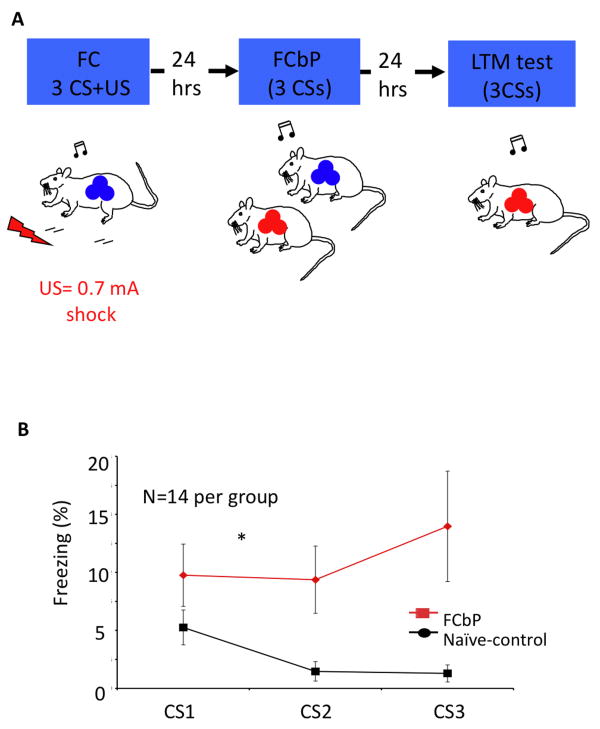Figure 1.
(A) Experimental design diagram illustrating the fear conditioning by-proxy paradigm. One rat from the triad was conditioned to 3 tone-shock pairings (0.7 mA footshock) (Blue). The next day, the conditioned rat and one of his cage-mates (FCbP rat, red) were placed in the conditioning chamber and 3 tones were played. No shock US was delivered at this time. Twenty-four hours later, all rats were tested for their freezing response to the CS (FCbP rat is shown here). (B) Effect of fear conditioning by proxy (FCbP) on freezing to a tone. FCbP rats showed significantly (p<0.05) more freezing to the tone than their naïve control cagemates when tested in the context in which they observed conditioned fear responses 24 h earlier.

